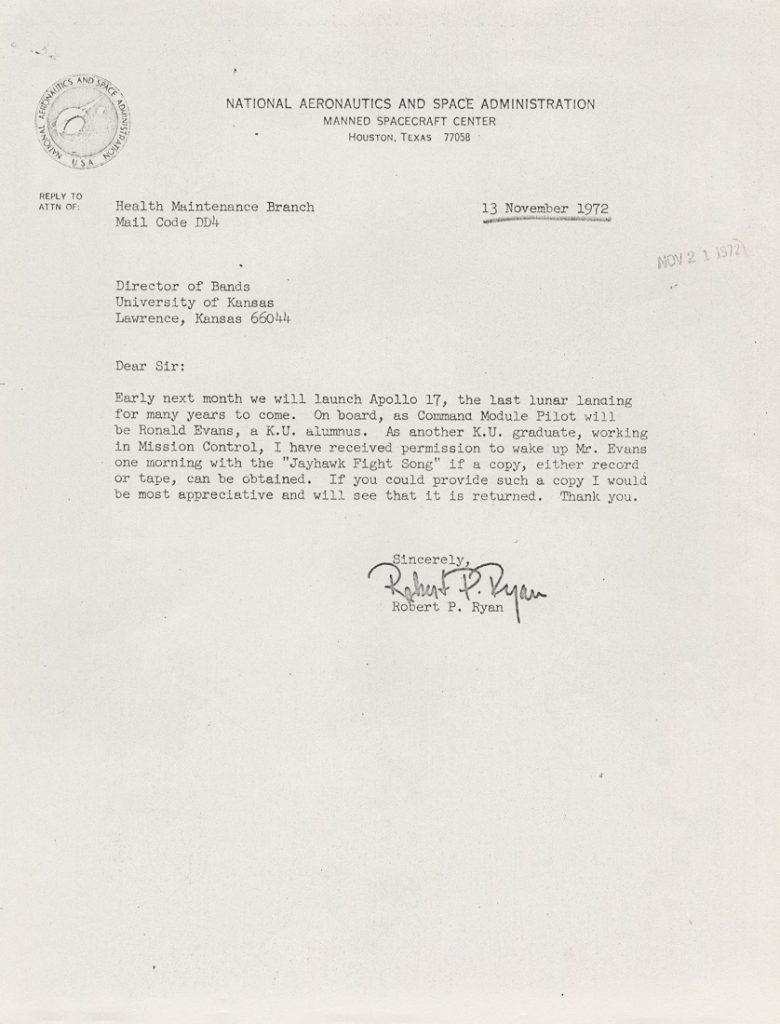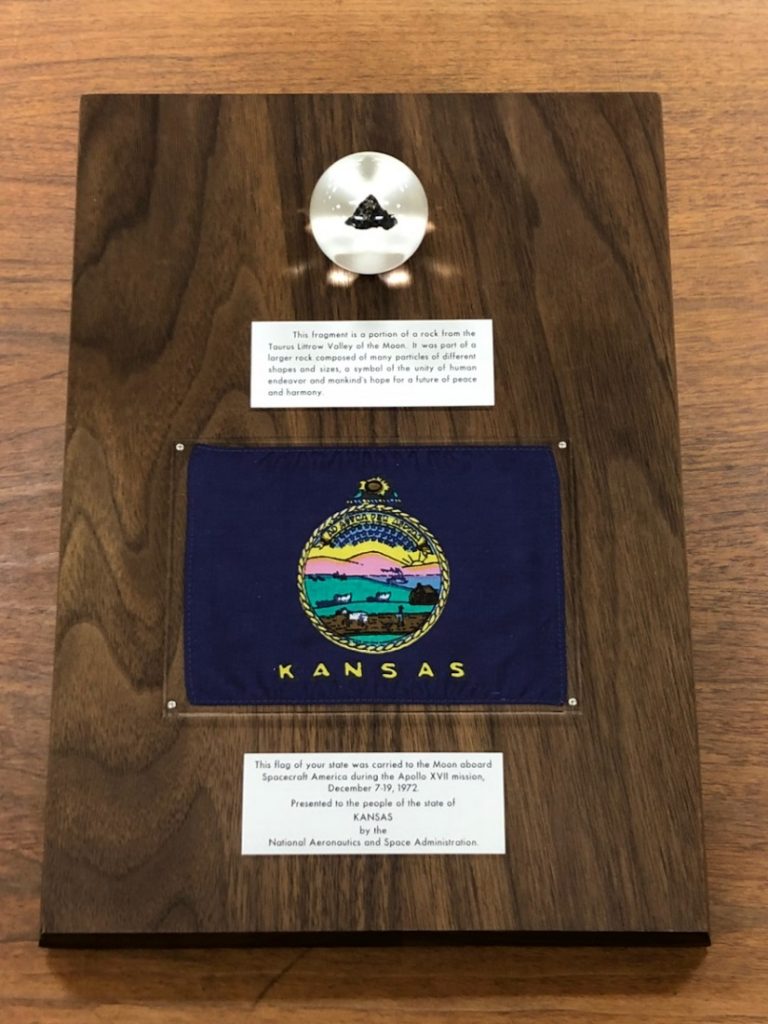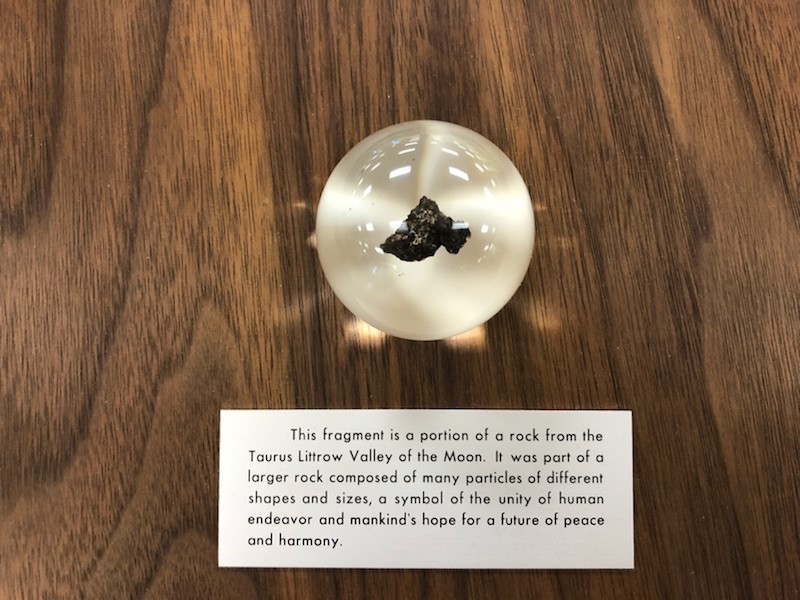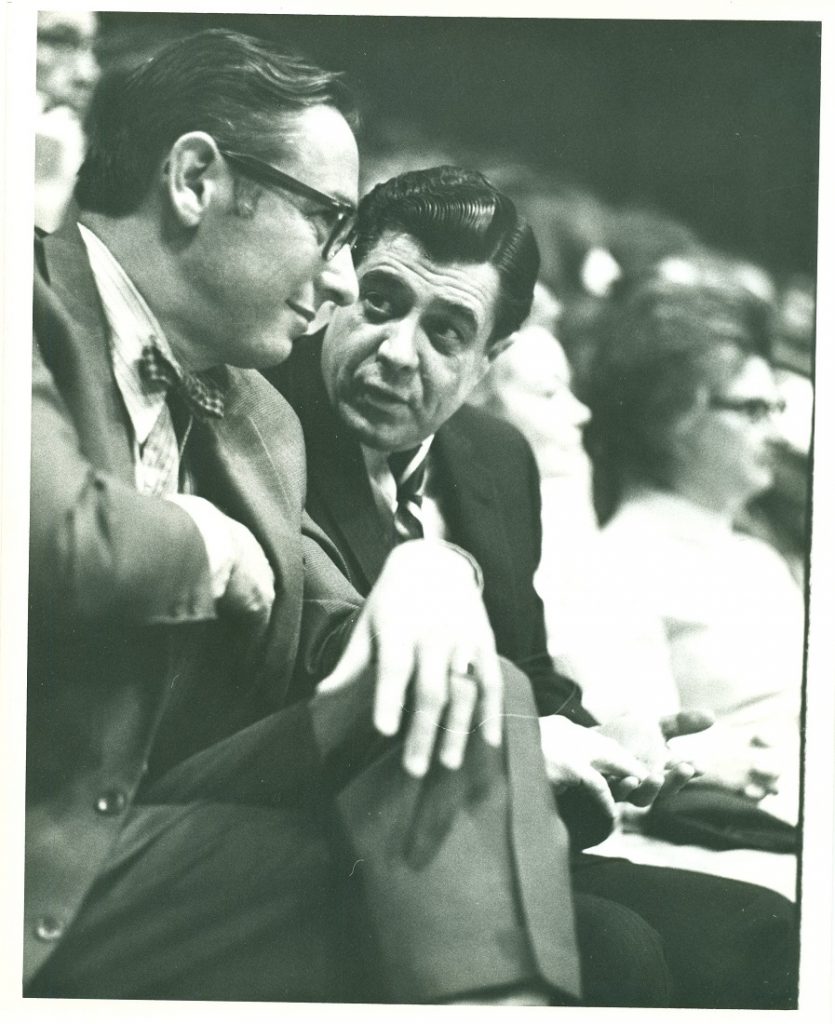Throwback Thursday: KU Astronaut Edition
July 18th, 2019Each week we’ll be posting a photograph from University Archives that shows a scene from KU’s past. We’ve also scanned more than 34,800 images from KU’s University Archives and made them available online; be sure to check them out!
As we commemorate the fiftieth anniversary of Apollo 11 – the first manned mission to land on the Moon – this week’s photograph features astronaut Ron Evans (1933-1990), a Kansas native who graduated from KU with a bachelor’s degree in 1955.
A Navy pilot during the Vietnam War, Evans was one of the nineteen astronauts selected by NASA in 1966. He served as a member of the astronaut support crews for the Apollo 7 and Apollo 11 flights and as backup Command Module Pilot for Apollo 14. Evans’ only space flight was as Command Module Pilot of Apollo 17. (It was during this December 1972 mission that the moon rock housed at Spencer Research Library was collected.)

During the Apollo 17 mission, Evans piloted the command module to the Moon. Once there, the lunar module separated from the command module and carried astronauts Eugene Cernan and Harrison Schmitt to the Moon’s surface. Evans (and five mice) maintained lunar orbit while Cernan and Schmitt explored the Moon’s surface, setting records for the longest time in lunar orbit (almost 148 hours) and the number of lunar orbits (seventy-five). According to a NASA description of Apollo 17, Evans also conducted numerous scientific activities.
In addition to the panoramic camera, the mapping camera, and the laser altimeter (which were used on previous missions), three new experiments were included in the service module. An ultraviolet spectrometer measured lunar atmospheric density and composition, an infrared radiometer mapped the thermal characteristics of the Moon, and a lunar sounder acquired data on the subsurface structure.
Finally, Evans brought the astronauts back to Earth. While en route, he completed an hour-long spacewalk to retrieve film cassettes from the lunar sounder, mapping camera, and panoramic camera.
Evans returned to the KU campus in April 1973 to receive the university’s Distinguished Services Award, the highest honor given by the University of Kansas and the KU Alumni Association. (Kenneth and Helen Spencer were the first couple to receive the citation – in 1943 and 1968, respectively.) Evans also spoke a the Senior-Parent luncheon, an event for graduating seniors and their relatives. During the luncheon, Evans presented Chancellor Raymond Nichols with the plaque shown in the photograph above. The plaque was placed in the auditorium of Nichols Hall, which was then the space technology building on campus. The hall’s auditorium was renamed the Ron Evans Apollo Room.
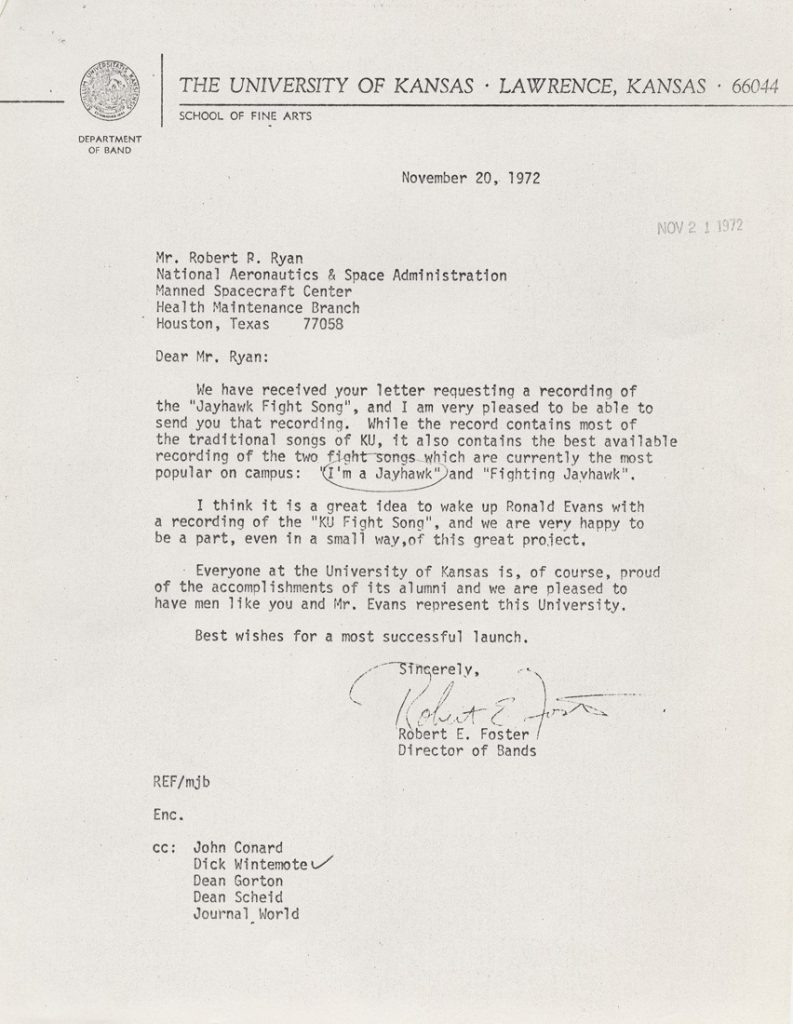
According to an account in the June 1973 issue of Kansas Alumni, Evans noted in his brief talk at the Senior-Parent luncheon that “I have come back to KU to redeem myself. One day during the flight, they played the Jayhawk fight song three or four times to wake me up and I didn’t hear it!”

Caitlin Donnelly
Head of Public Services

